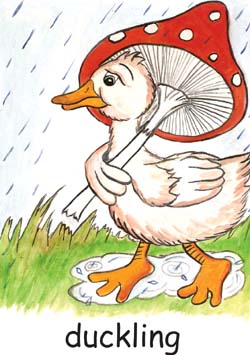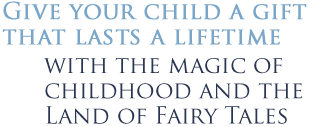Our method
- Our method
- Teaching aids
- Folk stories and fairy tales
- Our method in action
- Why is teaching a foreign language to young children a good idea
- Reviews
- Method creators
- Conferences and seminars
- Academic articles and research
- Academic papers


Why is teaching a foreign language to young children a good idea
There is ample evidence showing that children hear language already while in the womb and respond to familiar content after birth (the heartbeat of a newborn slows down when she hears a story that was read to her repeatedly while in utero). Also at a very early stage, which may be called the pre-communication stage, children already start using the language they are exposed to.
In one interesting experiment the subjects, who were adult French people, were asked to listen to and identify babbling samples from infants raised in France, Saudi Arabia and China. Results indicated that in 75% of cases the subjects recognized the samples correctly. In another experiment, the researchers recorded and analyzed the speech of American, French, Japanese and Swedish infants. It transpired that they were using a proportional amount of the sounds existing in their respective native languages (O'Grady 2005).
The world of science also has evidence to prove the existence of a period when both the first and the second language are acquired naturally and can be mastered to a very good level. That is why childhood is sometimes called the critical period or the "prime time".
Cases of children who were deprived of the chance to master language in the early years of their lives lend support to the theory.
Among such cases was a feral boy about twelve years old who was found in France towards the end of the 18th century (Victor of Aveyron). Apparently he lived his childhood in the wood and had never been able to master speech. Another such example in the 1970s was an American girl called Genie who was kept in isolation by her psychopath father. She was only freed and exposed to normal language when she was about thirteen (Shaffer 2005).
Children who got first experience of language before they were ten, such as Kamala, a wolf-girl who was found in India in 1850 at the age of around 8, managed to learn to communicate at a satisfactory level (Clark 2003).
As for the second language acquisition, the existence of such a window of opportunity for language learning was confirmed by the research of Ellen Bialystok, among others. Following her study of 2,000,000 Spanish-speaking immigrants and 300,000 Chinese-speaking immigrants, Professor Bialystok demonstrated that mastering a language at the age of 3 to 7 brought the best results (Bialystok 2001).
Biological and emotional factors related to early childhood also speak in favor of early education. First of all, the human brain is more plastic in the childhood when it is strongly focused on language acquisition. A child's ear is not yet accustomed to the sounds of their native tongue and their speech organs only start to develop. Explorers by nature, children are extremely curious of the world and ready to experiment, which makes it easier for them to overcome the barriers related to communication in a foreign language.
Brain is the most important organ that is responsible for mastering a language.
The first research on the correlation between brain and speech production is credited to Paul Broca. The French surgeon discovered a small region (named after him) in the left hemisphere that is responsible for articulated language. Shortly after that discovery, German scientist Carl Wernicke discovered another area in the left hemisphere that is primarily responsible for language comprehension.
In adulthood, damage to either of those areas will deprive us of the ability to communicate. In childhood, such damage does not seem to have such dramatic consequences as other parts of the brain can take over the activities related to the use of language. In children the whole brain is involved in the acquisition of language - both the left and the right hemisphere are active. In adults, it is mainly the left hemisphere that is responsible for communication.
The ear and the speech organs are also heavily used in childhood in order to acquire language. The ear is of great importance in this process. A child's ear is sensitive to higher frequencies than the adult's ear. Consequently, children hear subtle differences in pronunciation that adults are unable to hear. Adults adjust the sound they hear to their native language. Children are able to hear the small differences in their production.
Polish speakers can differentiate the "l" phoneme from the "r" phoneme but in Korean there is no such distinction and that is why Koreans frequently mix those two sounds in Polish. In Spanish, "b" and "v" sound similar, which explains why the Spaniards have problems telling the difference between the English words boat and vote.
Children whose ears are yet to grow accustomed to the sounds of their native language are able to recognize such differences (though not in 100%) and remember them.
Speech organs mature and change throughout 8 years - they undergo the so called developmental errors. That is why it is a good idea to take advantage of their plasticity in early childhood to learn a foreign language (Bee 2005, Shaffer 2007).
We should not forget emotional aspects related to childhood either. According to Iluk (2002) young children claim that language learning is nice and simple. They will most probably believe that in their future education as well. The older the child, the more convinced they may be that language acquisition is a difficult process and such conviction may prevent them from overcoming the communication barriers, even if they are only mental ones.
Now you know why it is a good idea to start teaching children as early as 2 years of age.

